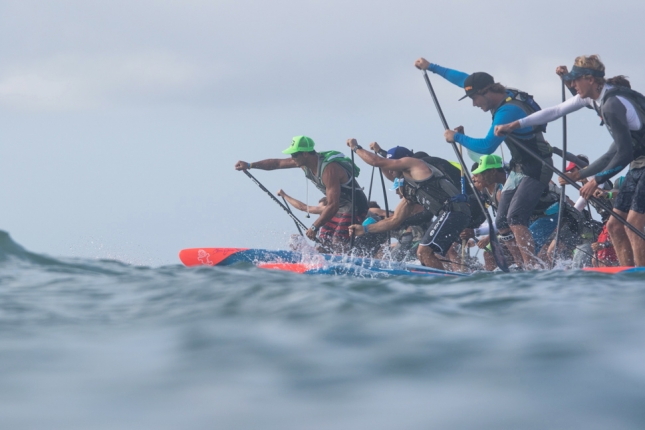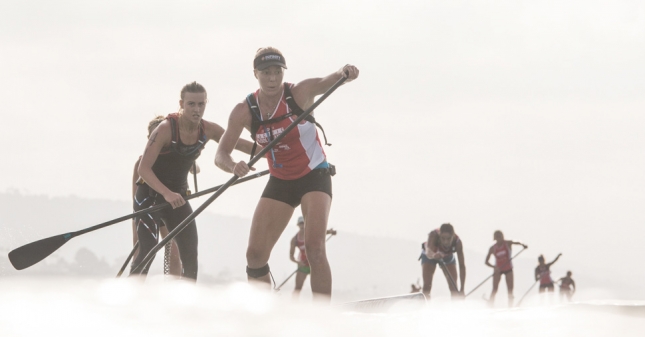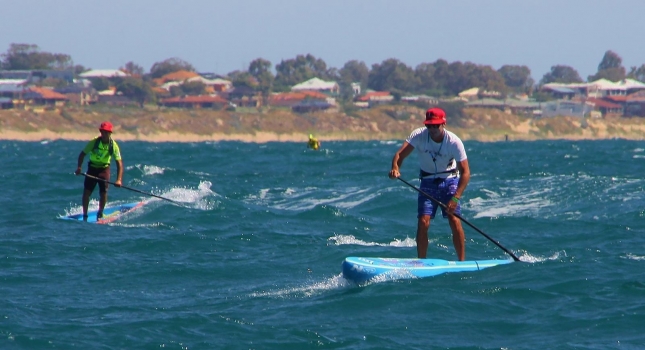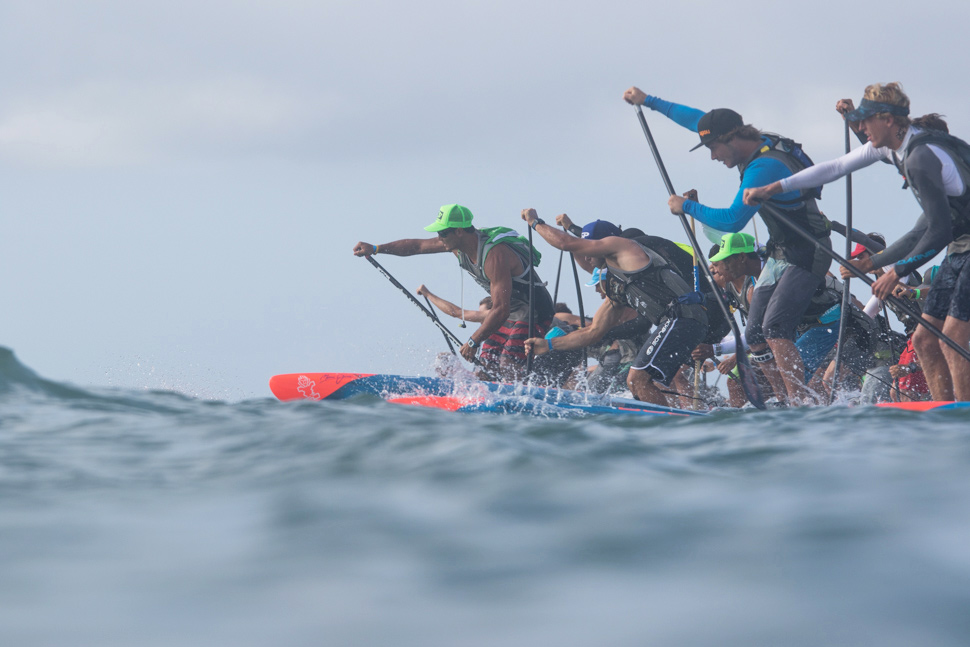
World Rankings: Here Are SUP Racer’s Star Ratings for Season 2017 (aka the Biggest Races in the World This Year)
This post has been updated: View the new Season 2017 Star Ratings
Original post below…
Two weeks ago, I sent out a survey to each of the world’s top-ranked paddlers asking which events they’d be competing in this year. The goal was to paint a picture of the biggest races in the world, which I think is not only an interesting insight for everyone in the sport to analyse, it also helps me to set clear ‘star ratings’ that will produce an ever more accurate World Rankings leaderboard.
Obsessed with statistics and wanting to see an unbiased list of the world’s best paddlers in what has always been a very fragmented and loosely organised sport, I started building the SUP Racer World Rankings four years ago using a complex set of algorithms that took 18 months of behind-the-scenes work to create. This included the all important ‘Race Index’ formula, which ranks every event in the world based on the level of elite competition and gives it a score from 0-100% that directly influences the rankings.
But while I believe the SUP Racer World Rankings have given us all an interesting and quite accurate insight into our sport, a common critique in the early days was that nobody knew which events would be worth what until after a race was finished, which made it hard for everyone to follow the race international season.
To fix that, I introduced star ratings last year that award a guaranteed minimum Race Index score to the big events in advance, eg. a 4 star race is worth at least 40%, a 5 star is 50% or above, and so on.
These star ratings produce a “map” of the biggest races in the world at the start of the season, which I feel gives our sport some much needed structure and clarity. But in order to set these ratings, I need to know exactly which athletes are going to be at what events…
So that’s why I asked the top paddlers to share their season schedule with me via the recent SUP Racer Athlete Survey. The survey simply listed each potentially-big race (events that were either ranked last year or that I knew were on the radar), and then I asked the athletes to simply choose ‘yes/no/maybe’ for each event.
Fortunately the world of paddleboarding is full of athletes that want to be involved in the sport’s evolution, which meant I received an overwhelming response: 49 of the top 50 guys (including all of the top 20) and 25 of the top 30 women responded. I can’t think of too many sports where a blogger can personally contact every top ranked athlete in the world and get an immediate answer, but that’s one of the great things about the world of stand up paddling.
This almost-universal response has given me a great insight into who is racing where, and therefore which events will be the most competitive and most influential on the World Rankings. So over the past few days, I’ve been compiling responses, crunching the numbers and coming up with a complete list of star ratings for the biggest races in the world this year.
I’ll jump into the full list of races in a moment (click here if you’re impatient), but firstly I want to touch on a few themes that have emerged, because we now group the big international races into clear sets: The Majors, The Tours, The Regionals and The Specialties.
(It’s also important to note the Race Index is just one way to analyse the “biggest” events; there are many awesome events doing great things for our sport that aren’t listed in the star ratings. That doesn’t mean they are any better or worse than the events that are, it simply just means there aren’t as many top-ranked athletes on the start line.)
[notdevice] [/notdevice]
THE MAJORS
These are the races that not only offer a huge level of prestige to the winners, they also do more for our sport than any other events. These massive races attract an incredible level of elite talent while also catering to the weekend warriors and first timers, as well as having strong industry support that give our sport a true foundation.
This year we’ve got three stand out stand up events: The massive Carolina Cup at the start of the season, the epic Gorge Paddle Challenge in the middle and the almighty Pacific Paddle Games towards the end of the year.
To recognise not only the stellar lineup of top paddlers that have said they’ll be competing but also to highlight just how significant these races events are for our sport, I’ve created a whole new star rating level this year: Seven stars. Carolina and the Gorge will land right around that 70% number, though the PPGs will once again go close to a perfect score.
I also add Molokai as an honourary fourth major, which sets up a ‘Grand Slam’ of four events similar to what we see in the world of tennis. Molokai is quite different to the ‘big three’ though so it fits in with the specialty events (and also receives a lower star rating than the other majors).
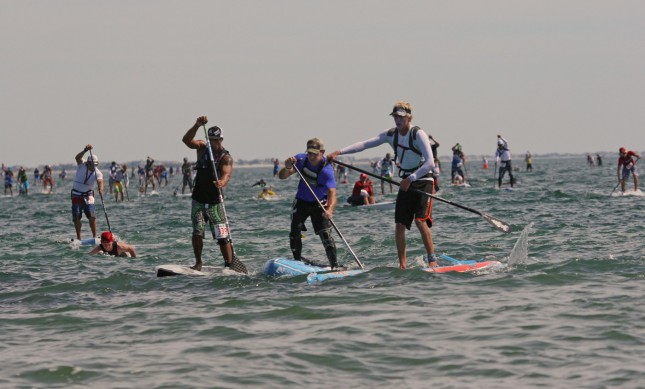
The Carolina Cup has grown into one of the true majors in our sport (photo: Chris McQuiston/SUP Racer)
[notdevice] [/notdevice]
THE TOURS
While there are dozens of standalone events around the world, we now have two clearly established tours that dominate the international racing season: The EuroTour and the APP Tour.
On the global level it’s the Waterman League’s APP Tour, which, after struggling to establish itself under the old ‘Stand Up World Series’ banner, now has a multi-million dollar investment and a new sense of excitement, energy and support behind it, particularly on the men’s side.
While it’s not yet on the same level as the Majors, the APP Tour has certainly jumped up a notch from the old World Series and is likely to feature six of the most competitive races of the season. There are 6x APP Tour events around the world for men and 5x for women: Maui, Japan, Germany, New York and China plus the men’s only event in San Francisco.
The APP Tour was a little difficult to rate because several top athletes are waiting to see how this new tour pans out (there were a lot of ‘maybes’), however I’m fairly confident the APP Tour will be a much bigger success than the World Series ever was, so I think each stop will either match or exceed its minimum Race Index score.
(NOTE: APP Maui/New York ratings were adjusted on Saturday evening after chatting with several paddlers and recalculating responses).
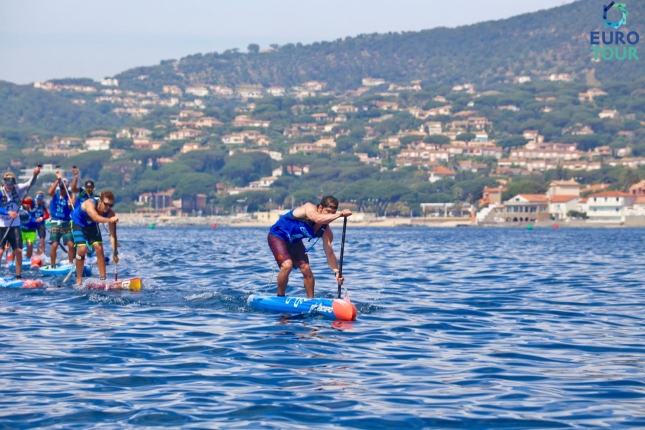
Michael Booth will return to Europe once again to battle Connor and co in France, Spain and Germany (photo: Kerry Powell/EuroTour)
The other established tour is of course the Euro Tour, which dominates the European Summer of SUP and has helped unify the world’s broadest racing region.
This year the EuroTour will have seven events guaranteed to count for the World Rankings, which gives it a massive influence on the international race scene. So if you want a good position on the leaderboard, a few weeks in Europe would be a good idea.
The EuroTour has definitely gone up a notch from last year, with a big string of back-to-back races in late May right through June all scoring four stars whereas most of them were only 3 star in 20156. While the Tour covers 12 weeks from late April through to the end of July, the ‘prime’ events are clearly in May and June).
This year we see two new events in France leading the way: The Hossegor Paddle Games in Hossegor (which could be the most exciting race of the summer), and the Thonon-les-Bains race on Lake Geneva, which will probably be the most competitive race on the Tour. The old favourites such as St. Maxime and Bilbao are big races once again, while San Sebastian and Narbonne will also feature.
The EuroTour is also sanctioning the SUP World Cup in Germany along with the APP, which is looking set to be the single most competitive weekend of the summer.
The EuroTour is a favourite for many athletes (and media…) because it’s just as much a summer holiday in Europe as it is a racing series. Definitely one of the highlights of the year.
[notdevice] [/notdevice]
THE REGIONAL MAJORS
The ‘Regionals’ represent the big standalone races in each part of the world. They’re not on the same level as the Carolinas and Gorges, but these events carry a lot of regional significance, prestige and influence.
This year all of the Regionals are rated between 2 and 4 stars, including OluKai and Maui2Molokai in Hawaii, the King of the Cut and Noosa Festival of Surfing in Australia, along with races in Tahiti, Japan, Hong Kong, Germany and France. There are a few new additions to the lineup this year, while other regional events, particularly King of the Cut and M2M, have seen a noticeable jump in their Race Index scores from last season.
[notdevice] [/notdevice]
THE SPECIALTY EVENTS
I’m not sure ‘specialty event’ is the correct title here, but basically these are the races that don’t really fit in with the rest of the sport because they’re so unique.
This year the ‘Specialties’ are Molokai-2-Oahu, aka the most prestigious event in the world of paddleboarding, the 11 City Tour in the Netherlands, arguably the toughest race in the sport, and the ISA Worlds in Denmark.
These three races all add unique and very special stories to our sport, and therefore they’ve all received a minor bump in their star rating based on factors such as prestige and significance. Each of these races is probably half or a full star above what it would otherwise score, because I believe it’s important to recognise the contribution, and also because the Race Index isn’t perfect and fails to account for factors such as prestige, history and challenge.
Molokai still has a lot of ‘maybes’ from the top athletes, however I estimate it will be the most competitive year yet and will actually go close to matching its 5 star/50% minimum.
The ISA Worlds may actually score well above its minimum, at least on the men’s side, however most athletes haven’t qualified for their national teams and therefore almost everyone listed it as a “maybe” on the survey. The men’s races in Denmark could score anywhere from 32%-57%, however I’m confident it’ll closely match the four star rating its been awarded.
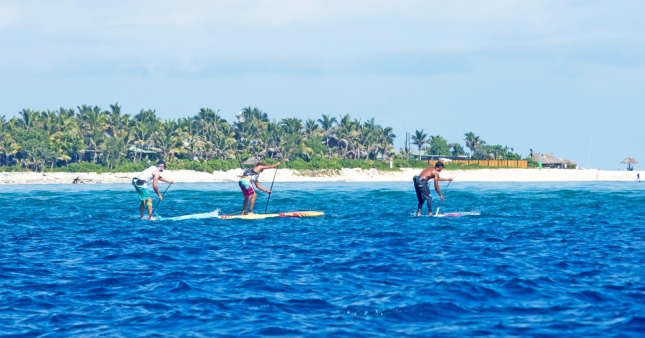
ISA Worlds are now an established part of the season and will attract a record number of teams this year (photo: ISA)
There are also a few unknowns this season, with some events still to be confirmed. The biggest of those is the Quiksilver/Jamie Mitchell Survivor Race. The JM Survivor was one of the most talked about events of 2016, and if it returns in 2017 (fingers crossed), it’ll probably slot right in at the five star level.
I know of one or two other big events yet to be announced that may also qualify.
It’s also worth noting that any race in the world will still qualify for the World Rankings even if it hasn’t received a pre-season star rating, just so long as it scores 20% on its own.
Some of the other themes that have emerged…
The Pacific Paddle Games Is Massive
This kind of deserves a post all of its own, which perhaps I’ll do next week, but long story short: The Pacific Paddle Games is far and away the biggest race in the world, at least in terms of the level of competition on the start line.
Almost every single top ranked paddler has said they’ll be in Dana Point on the last weekend of September, which sets up the PPGs as a true anchor of the international season. There’s even an outside chance the event could hit the mythical 100% mark this year, which is kind of like the unicorn of the SUP racing world (it’s a long shot, but how cool would that be?!).
Anyway I’ll have more on this story next week…
Women Get Their Own Spotlight
The 2017 SUP Racer World Rankings will work much the same as it did last year, however one big change this season is separate a Race Index for men and women. This helps give the women more of the spotlight, while it also solves the issue of some men’s races being far more competitive than women’s or vice versa (last year I had the women’s base star ratings pegged to the men’s).
You’ll see that most women’s events are a star or two lower than the men’s (though a few events in California are actually higher), with the ‘majors’ being the only races that will attract a serious chunk of the elite women’s field.
So while most of the events on the men’s Race Index have been given guaranteed minimum score that they’ll comfortably exceed anyway (so it was fairly safe and easy to award these star ratings), almost all of the women’s events, including the APP Tour, the EuroTour, the ISA Worlds and most of the Regional Majors, have been given a bump to help correct what is a clear imbalance in the sport.
Women have far fewer opportunities to travel and compete than men, and their under-representation is a problem we all need to address. So if I didn’t give the women their own Race Index it would have sent the system into free fall and simply reinforced the status quo. So while I try to avoid “inflating” the star ratings, this is SUP Racer’s small way of helping give world’s best women more attention in season 2017.
(The women’s Race Index has always been calculated different to men – only the top 30 women need to race in order for it to be a 100% event, as opposed to the top 50 men – however I’ve tweaked the formula again this season to try and bring the women’s races up a level. I’ll go into more detail on the Q&A next week.)
Notes…
Keep in mind these are guaranteed *minimum* scores, not maximums. Any event can still theoretically score 100% on the Race Index no matter what star rating it’s been awarded. eg. The Pacific Paddle Games is a 7 star event, which means it scores a guaranteed minimum 70% on the Race Index but could rate anywhere from 70-100% (it’ll probably land somewhere in the low 90s).
– – – – –
SATURDAY UPDATE: Brand new events are now classified under the First Year Rule, which means they receive no guaranteed minimum Race Index score because they are unproven events.
We’ve still given each of these events a star rating as a rough guide of what to expect, but the final Race Index score will depend entirely on actual athlete participation. So unlike the established events on the list, these new races have no guarantees. I’ll do a separate post Monday to explain the ‘First Year Rule’, but the basic idea is that we feel new events shouldn’t receive a guaranteed score until they’ve proven themselves.
– – – – –
Finally, I’ve also included an ‘estimate’ of the exact Race Index score for each event in the table below. This is *not* the event’s final score, it’s just a general estimate and a way to highlight which races are likely to exceed their minimums (and to show just how insanely popular the Pacific Paddle Games has become).
UPDATE: I’ve removed the ‘Estimate’ score from the list below because it was causing a lot of confusion. It was never going to be perfectly accurate anyway, considering every race will fluctuate slightly as the rankings change and as some paddlers alter their season schedule mid-year. Also removed the ‘Rank’ column from the table, as that was causing a bit of confusion as well. Events are now simply listed and grouped according to star ratings.
But anyway, enough rambling. If you know me, you know I’m passionate about the stats and numbers behind this sport, so I could easily talk all day about how the World Rankings algorithm works, why certain races are ranked the way they are, and what other important themes are emerging in our sport this season.
If you want to hear more, I might do a Facebook Live Q&A session next week that lifts the curtain, goes behind the scenes and gives you some insight into how the whole international racing season really works.
But for now, here is the lineup for ‘Season 2017’ based on responses from the world’s best paddlers to the SUP Racer athlete survey.
 
[notdevice]Season 2017 Men’s Race Index[/notdevice][device]Season 2017
Men’s Race Index[/device]
See the updated Season 2017 Star Ratings
[notdevice]Season 2017 Women’s Race Index[/notdevice][device]Season 2017
Women’s Race Index[/device]
See the updated Season 2017 Star Ratings
SATURDAY UPDATED NOTES:
– We updated the list with the ‘First Year Rule’ that applies to brand new (i.e. ‘first year’) events.
These races don’t receive a minimum Race Index score because, unlike the established events on the list, they haven’t yet proven themselves. These events will still receive a Race Index score, just not a guaranteed minimum, i.e. their score will be calculated after the event based purely on athlete participation.
We’ve still given these events a provisional star ratings (based on athlete survey responses), which will be a rough guide of what to expect from the event’s eventual Race Index score.
The First Year Rule applies to 2x APP Tour events (New York and China) and 3x EuroTour events (Hossegor, Thonon and Narbonne).
The basic idea behind the First Year Rule is that new events shouldn’t receive a guaranteed score until they’ve proven themselves. More info about this on Monday.
– We also removed the ‘Estimate’ score from the list below because it was causing a lot of confusion. It was never going to be perfectly accurate anyway, considering every race will fluctuate slightly as the rankings change and as some paddlers alter their season schedule mid-year.
– The APP Maui/New York ratings were adjusted on Saturday evening after chatting with some paddlers and recalculating responses. Maui was changed from 6-star to 5-star; it will still safely exceed 50% but a few paddlers pulled out of the event so it won’t hit 60% like we originally thought.
New York was downgraded from 6-stars to 5-stars after recalculating the responses and factoring in the massive number of ‘maybe’ responses; New York has a possible Race Index range as low as 43% and as high as 75%, so it’s too early to give it a 6-star rating. I do expect it to safely go over 50% though.
– The Paris Crossing was increased from a 2-star to a 3-star race for men.
– One new race may be added as a 2-star event on Sunday, while we’ll do one final sweep through the responses and update/adjust any other events that have fluctuated. I don’t expect any changes to an event’s star rating after next week.
EXTENDED NOTES:
¹ Any event not listed above that scores 20% or more will also qualify for the World Rankings system.
² Star ratings are directly aligned with the guaranteed minimum Race Index score, eg. a 7 star event is guaranteed to score at least 70%, a 6 star scores at least 60%, and so on. These star ratings guaranteed *minimum* Race Index scores, not maximums; any event can still score up to 100%.
³ The ‘estimate’ is just that, an estimate of what the final Race Index score will be (with the guaranteed minimum taken into account as a base score). This is not the final score for each event, it’s just a way to highlight which races are likely to exceed their Race Index guaranteed minimums. So for example the Pacific Paddle Games is guaranteed to score at least 70% and will likely be closer the low 90s but its final score could be anywhere from 70-100%.
⁴ I don’t expect this list to change too much, however there may be adjustments this week and over the course of the season if certain events fluctuate up or down.
Each event is “one event, one result” no matter how many individual races there are. The only exceptions are the Gorge and the ISA Worlds:
⁵ The Gorge Paddle Challenge, one of the true majors of the sport, is unique in that it has two totally separate races. Unlike the one-race Carolina Cup or the ‘combined result’ Pacific Paddle Games, the Gorge clearly separates its beach race and signature ‘Double Downwinder’ in terms of both prize money and focus. So how do we recognise each individual race without making the Gorge skewer the overall season rankings by giving it too much weighting? Just like last year, I’m going to keep the attention on what is clearly the main event of the weekend, the Double Downwinder, however the beach race (which organisers are revamping this year) will still get its own score. I’m going give that race a maximum of 0.6x the score of the Double Downwinder, so if the Double scores 75%, the beach race will be worth exactly 45% even if the same athletes are on the start line (and if for some reason far fewer top athletes do the beach race then it will score lower than that).
⁶ The ISA Worlds are a really tough one to rate because most athletes don’t even know if they’ve qualified for their national teams yet. The men’s score had a variable range of 32%-57%, which means it could be anything from a 3-star to a 6-star. To make it even more complex, the Worlds will have three separate races this year (as opposed to just two races at previous editions): The distance race, the beach race, and the new ‘sprint’ event. The distance and beach races will have 2x guys and 2x girls from each nation, and will each score a minimum 40% on their own. The third event, the sprint race, will only have 1x guy and 1x girl from each team and therefore won’t score nearly as much. That race will still be eligible for the rankings, but I’m going to leave it as a ‘floating’ event that scores whatever it naturally scores, i.e. there’s no guaranteed minimum (it will probably score low 30s on the men’s and mid 20s on the women’s Index).
⁷ These are the brand new, first year races, which will receive no guaranteed minimum Race Index score because, unlike all the other events on the list, they haven’t yet proven themselves. However these events still receive provisional star ratings, which can be taken as a fairly accurate guide of what to expect. More info about the ‘First Year Rule’ on Monday.



